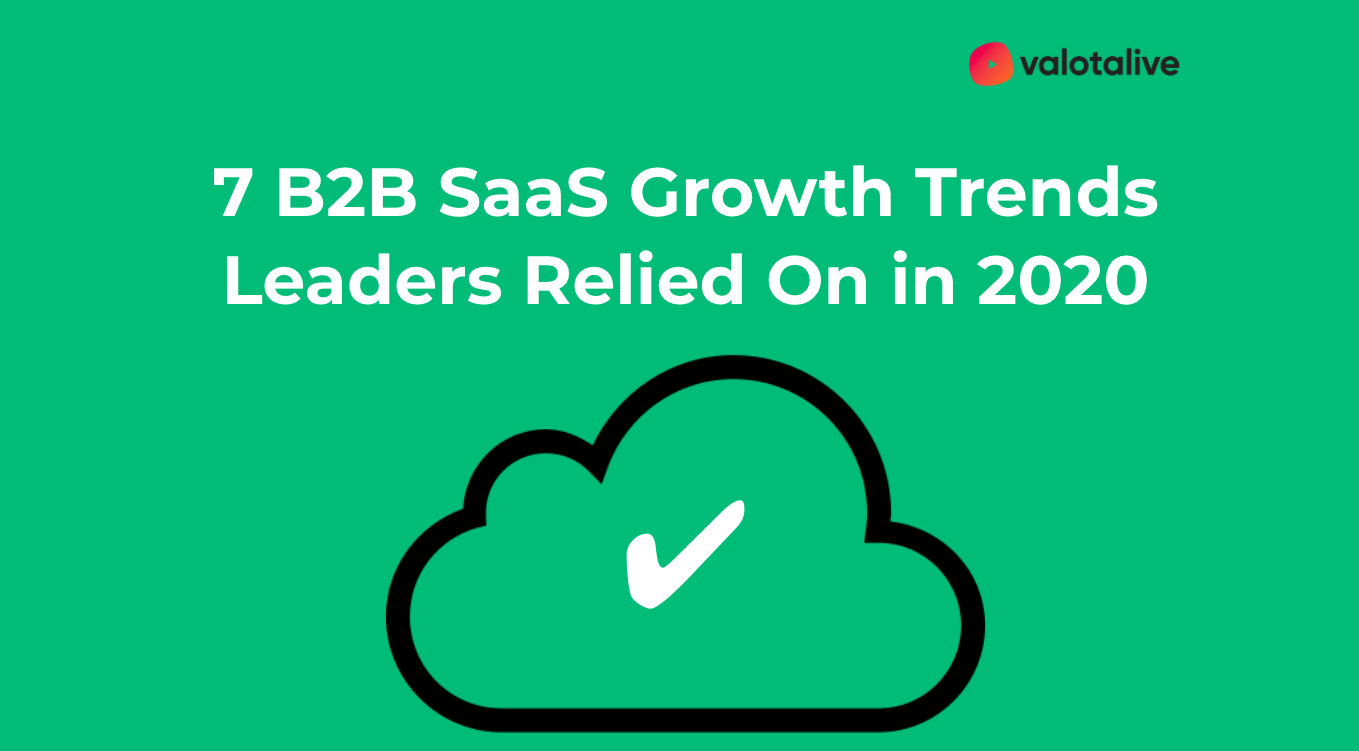Despite the challenges and frustrations of 2020, B2B SaaS companies managed to thrive. As an example, Salesforce buys Slack in a 27,7 billion megadeal.
In fact, the conditions brought about in 2020 – like virtual business environments – heightened the already growing demand for B2B software.
That’s why Gartner predicts SaaS to grow from $104.7 billion in 2020 to a whopping $121 billion in 2021.
B2B SaaS growth wasn’t and still isn’t guaranteed, however. An increased demand breeds more competition – and B2B SaaS is already a saturated market. Here’s how leading companies succeeded in 2020.
7 Trends B2B SaaS Leaders Used to Grow in 2020
Winning B2B SaaS companies prioritized human-centric experiences and both employee and customer communication in 2020. As business and communication suddenly became 100% digital, an already all-digital product like SaaS needed to focus even more on customer emotions and user experiences.
1. Integrated Digital Employee Communication
Every successful SaaS company has an integrated digital communication system to keep their remote teams connected, informed, and empowered.
2. Account-Based Marketing
B2Bs leaned into ABM this year as they tried to stretch marketing budgets, improve content, and forge deeper connections with individual customers. ABM helped SaaS companies understand the unique realities each customer faced in 2020 and grow existing customer relations. In general, you are 60-70% likely to sell to an existing customer, compared to the 5-20% likelihood of selling to a new prospect.
3. Sales-Marketing Alignment
Typically restrained by silos, sales and marketing alignment was important in 2020 for maximizing tactics and strategies across both departments. Successful B2Bs united departments to improve lead scoring, customer retention, and lead nurturing.
4. Personalized Digital Experiences
Accessible AI and machine learning systems made it easier for B2B SaaS companies to incorporate personalized content recommendations and resource hubs.
72% of B2B buyers say they expect vendors to personalize engagement based on their needs. Another 69% say they want Amazon-like buying experiences. In such a crowded market, personalization was vital to B2B SaaS growth in 2020.
5. Conversational Customer Service
Real-time interactions show customers that you care about their immediate needs and current struggles. Winning B2B SaaS companies prioritized every communication channel possible like live chat, chatbots, texting, email, social media messengers, to level up their customer service.
6. Custom Pricing and Products
Although many buyers like to complete their purchases online, 61% still like reaching out to sales teams for custom pricing and configurations.
But leading B2B companies didn’t wait for buyers to reach out – they supplied custom offers upfront via their websites and other digital tools. Dynamic landing pages and interactive calculators provide customized information in real time.
7. Buyer-Specific Social Media Strategies
Social media usage skyrocketed in 2020 among B2B buyers as they conducted more research online and spent time across multiple platforms like LinkedIn, Reddit, and Quora.
Gartner reports that 46% of buyers use social media in the early stages of the sales funnel. SaaS marketers capitalized on buyer-specific content during this time to earn credibility and trust.
Make Digital Communication a Priority for B2B SaaS Growth in 2021
B2B SaaS growth hinges on human communication on modern digital platforms. Integrative digital communication tools, and devices are key for managing data and keeping everyone informed – whether workers, investors, leaders, buyers, leads, or customers.
In our increasingly online world, more and more companies in dozens of countries around the world trust Valotalive digital signage technology to keep their workplace communication running. Learn how Valotalive’s digital signage boosts productivity and engagement for onsite and remote teams.



